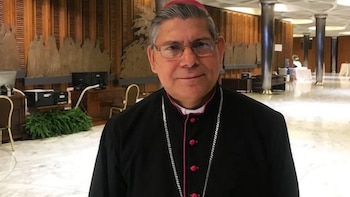
Sandra Rosado, representative leader of the Wayuu community, described as “barbarism” the way the Mobile Anti-Riot Squadron, ESMAD, intervened in the National Park on the night of April 6 and added that the confrontations left 24 injured, between children, pregnant women and seniors.

The events began after a meeting held on April 6 in the afternoon with the leaders of the council and representatives of the mayor's office of Bogotá, headed by Horacio Guerrero, and the Personería de Distrital. During the rally, they assured them at the press conference that the characterization process, carried out a couple of weeks ago, in conjunction with the Ministry of the Interior, was damaged by “a human error” in the fingerings of the cards, which they say they were physically handed over, but did not correspond to the names, assured the civil servants.
This motivated them to close the seventh race, with the security fences that delimit the cambuches in the National Park. The Bacatá Community says that its purpose was to slow down with bumps, to do a “pedagogical exercise”, and that citizens know what they are asking of the national government.
The official version, delivered by the deputy commander of the Bogotá Police, Colonel Herbert Benavidez, was:
In addition, they assured that the intervention of ESMAD was made with the intention of “unlocking” the traffic on the seventh race. This is because, for four hours, vehicles and citizens were trapped in the closure of the indigenous community.
T he mayor of Bogotá, Claudia López, said:
In addition, the president defended the actions of the Police and ESMAD when she learned the balance of the riots:
However, the events that began at approximately 6 in the afternoon intensified after ESMAD surrounded the indigenous people so that they would not leave the cambuches, says one of the street vendors who works in a small shop next to the Plaza del Parque Nacional.
Those street vendors had to “run” when they saw that the excesses began, Felipe Buitrago, who has a street stall where he sells arepas and empanadas on the corner of Carrera 7 and Calle 35, was one of those who fled to prevent his car from being “stoned again”.
Infobae Colombia toured the area and within the cambuches of the community and it was evident that the damage is occasionally evident in the headquarters of an insurance company, the old DIAN building and on a property in front of a renowned automotive dealer.

Nubia Gutierrez, owner of a shop in the seventh race with 34th street, said that at first she saw that “as a result of the motorcycles, the streets closed and I saw that some cars were dammed,” she added that she witnessed when some vehicles were damaged, but that she was not there at the time when the indigenous people “vandalized” the properties surrounding areas.
Many of the neighbors and bystanders in the sector say that, although they are concerned about the situation and have been badly affected at the economic level, they support the Bacatá Community, ensuring that the national government should respond to their requests.
Felipe Buitrago added, “let them fix quickly, because we merchants are breaking down”, in fact, several workers in companies, universities and other commercial premises are prohibited from giving statements to the press, because they fear reprisals for comments or opinions they may have on the situation.
KEEP READING:
Últimas Noticias
Debanhi Escobar: they secured the motel where she was found lifeless in a cistern

The oldest person in the world died at the age of 119

Macabre find in CDMX: they left a body bagged and tied in a taxi
The eagles of America will face Manchester City in a duel of legends. Here are the details

Why is it good to bring dogs out to know the world when they are puppies




